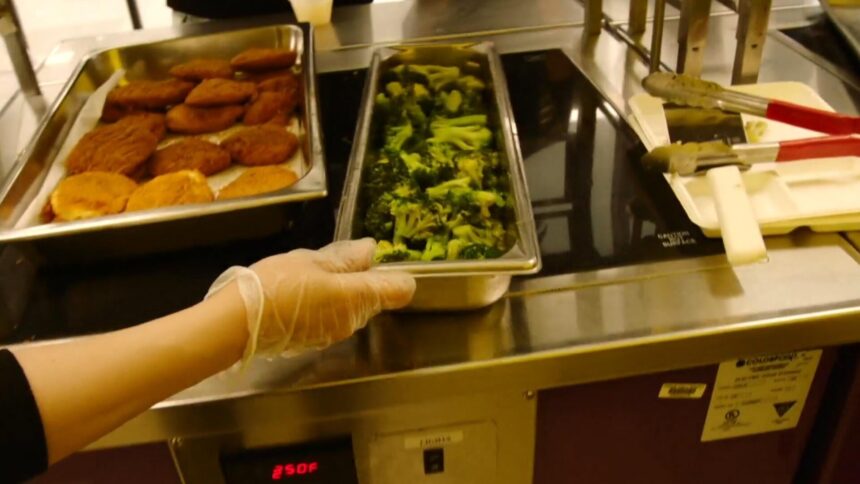Significant USDA Funding Cuts Impact North Carolina Food Banks
Durham, North Carolina — At Riverside High School, fresh produce is an integral part of the meal offerings, sourced primarily from local farmers. Jim Keaten, who oversees the nutrition program for Durham Public Schools, emphasized the importance of supporting local agriculture, stating, “We receive local shredded carrots, cucumbers, lettuce, because we feel that we need to support people in our own communities.”
However, the recent cuts to vital U.S. Department of Agriculture (USDA) programs have left Keaten and his team grappling with uncertainty regarding their food supply. In a shocking turn of events stemming from decisions made by the Trump administration, funding for programs crucial to local school districts and food banks has been drastically reduced. “Immediately, my thoughts were, what are we going to do?” Keaten recalled. “Because these are the funds we use to provide local foods to kids.”
The Cuts and Their Implications
In March, federal funding reductions yielded the elimination of over $1 billion in annual support distributed across various programs that aid food banks and educational institutions. This includes a $660 million reduction to the Local Food for Schools initiative and a $420 million cut from the Local Food Purchase Assistance Cooperative Agreement. These reductions have profound implications for communities reliant on federal support for their food supplies.
Farmers like Linda Leach-Hughes, co-owner of Pine Knot Farms located about an hour away from Riverside High School, are facing dire financial repercussions. After contributing approximately $150,000 worth of produce to local schools in the previous year, she described the loss of this revenue as “devastating.” “If we do not have this extra income coming in to help local folks in the community, then we will have to lay folks off, we can no longer employ folks,” she warned.
Impact on Local Food Banks
Pine Knot Farms also supplies produce to the Food Bank of Central and Eastern North Carolina. Its president and CEO, Amy Beros, has reported a staggering loss of nearly $2 million due to the halted aid. Beros expressed disbelief, stating, “We’re facing one of the worst hunger crises in decades, and now we’re going to increase the need even more.” Without food assistance, many families are forced to choose between necessary medication and essential nutrition.
Voices of Concern
The anxiety surrounding food security not only weighs on those who work in food distribution but also resonates deeply with local farmers. “How are you going to make America great again if you’re taking food out of the mouths of babies, senior citizens, nursing homes, rehab centers, hospitals, all of these agencies that are dependent on federal dollars?” Leach-Hughes implored, raising questions about the moral implications of such legislative choices.
Summary of USDA Cuts
| Program | Funding Cut |
|---|---|
| Local Food for Schools | $660 million |
| Local Food Purchase Assistance | $420 million |
| Total | $1 billion |
As the repercussions of these funding cuts unfold, communities across North Carolina and beyond are left to navigate a growing crisis of food insecurity that threatens the well-being of countless individuals and families. The need for support is more pressing than ever.




